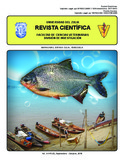| dc.rights.license | http://creativecommons.org/licenses/by-nc-sa/3.0/ve/ | es_VE |
| dc.contributor.author | Isanta, Fernando | |
| dc.contributor.author | Barba, Cecilio | |
| dc.contributor.author | Léon, José Manuel | |
| dc.contributor.author | García de Tena, Agustín | |
| dc.contributor.author | Angón, Elena | |
| dc.contributor.author | Moyano, Rosario | |
| dc.date.accessioned | 2019-10-30T15:29:15Z | |
| dc.date.available | 2019-10-30T15:29:15Z | |
| dc.date.issued | 2019 | |
| dc.identifier.issn | 0798-2259 | |
| dc.identifier.uri | http://www.saber.ula.ve/handle/123456789/46144 | |
| dc.description.abstract | El programa Letra Q es el sistema oficial de información de la Unión Europea que permite el registro e identificación de los agentes, establecimientos y contenedores del sector lácteo para mejora de la trazabilidad de la leche cruda con destino al consumo humano, desde la explotación productora hasta la industria transformadora. En este trabajo el objetivo fue analizar el funcionamiento del programa Letra Q en leche cruda de oveja en el sur de España (Andalucía). Se estudiaron cinco variables de gestión de procesos: estado de la muestra, resultado de la muestra (VA: muestra analizada válida, VI: muestra válida incompleta; ER: muestra en reserva y RE: muestra rechazada), tiempo desde la toma de la muestra hasta la recepción en laboratorio (TTR), tiempo desde la recepción de la muestra hasta su análisis (TRA), tiempo total desde la toma de la muestra hasta análisis (TTA); cuatro variables bromatológicas: contenido de grasa (G), contenido de proteína (P) y extracto seco magro (ESM), y punto crioscópico (PC); y tres variables higiénico- sanitarias: recuento de células somáticas (RCS), número formador de colonias (NFC) y presencia de inhibidores (PI). Se realizó un análisis estadístico descriptivo y comparativo sobre un universo de 7.507 muestras pertenecientes a 53 explotaciones. Los resultados evidenciaron VA (77,67 ± 0,54), VI (20,65 ± 0,53), ER (1,05 ± 0,01), RE (0,63 ± 0,01%), TT-R (1,27 ± 1,82d), TR-A (1,32 ± 1,67d), TT-A (2,53 ± 1,77d), G (6,98 ± 0,48 g/100g), P (5,40 ± 0,48 g/100g), ESM (12,23 ± 2,71 g/100g), PC (-0,57 ± 0,01oC), RCS (971,69 ± 764,72 x 10 3 células/mL) NFC (121,24 ± 280,675 x 10 3 células/mL) y PI (0,12 ± 0,09%). El análisis comparativo reveló existencia de diferencias significativas en las variables de gestión de procesos para los factores año y tipo de laboratorio, así como también se observaron diferencias para las variables bromatológicas e higiénico-sanitarias entre tamaño de explotación y el tipo de raza. Se concluye que el programa Letra Q contribuye a garantizar la inocuidad alimentaria en los consumidores y constituye una herramienta de gran interés para la gestión y mejora del sector lácteo. | es_VE |
| dc.language.iso | es | es_VE |
| dc.publisher | SaberULA | es_VE |
| dc.rights | info:eu-repo/semantics/openAccess | es_VE |
| dc.subject | Gestión Veterinaria | es_VE |
| dc.subject | Programa letra Q | es_VE |
| dc.subject | Calidad de leche | es_VE |
| dc.subject | Seguridad alimentaria | es_VE |
| dc.title | Análisis del sistema de trazabilidad de la leche de oveja en el sur de España (Andalucía). Resultados preliminares | es_VE |
| dc.title.alternative | Analysis of the traceability system of sheep milk in southern Spain (Andalucía). Preliminary results | es_VE |
| dc.type | info:eu-repo/semantics/article | es_VE |
| dcterms.dateAccepted | 15/03/2018 | |
| dcterms.dateSubmitted | 29/10/2018 | |
| dc.description.abstract1 | Letra Q program is the official information system of European Union that allows registration and identification of agents, establishments and containers of dairy sector to improve the traceability of raw milk for human consumption from farm to dairy industry. In this paper, the objective was to analyze Letra Q program functionig in raw sheep milk in the South of Spain (Andalusia). Five process management variables were studied: sample status, sample result (VA: analyzed valid sample; VI: incomplete valid sample, ER: sample in reserve,and RE: rejected sample), time from sample collection to laboratory reception (TT-R), time from sample reception to analysis (TR-A), time total
from sampling to analysis (TT-A); as well as four bromatological variables: fat content (G), protein content (P) and lean dry extract (ESM), and cryoscopic point (PC); and finally three hygienic-sanitary variables: somatic cell count (RCS), colony forming number (NFC) and inhibitors presence (PI). A descriptive and comparative statistical analysis on a universe of 7,507 samples
belonging to 53 farms was performed. The results showed VA (77.67 ± 0.54), VI (20.65 ± 0.53), ER (1.05 ± 0.01), RE (0.63 ± 0.01%), TT- R (1.27 ± 1.82d), TR-A (1.32 ± 1.67d), TT-A (2.53 ± 1.77d), G (6.98 ± 0.48 g/100g) , P (5.40 ± 0.48 g/100g), ESM (12.23 ± 2.71 g/100g), PC (-0.57 ± 0.01oC), RCS (971.69 ± 764.72x103) cells/mL) NFC (121.24 ± 280.675x103 cells/mL) and PI (0.12 ± 0.09%). The comparative analysis revealed significant differences in management variables for factors year and type of laboratory, as well as differences for bromatological and hygienic-sanitary variables between farm size and breed type. It is concluded that Letter Q program contributes to guarantee food innocuousness in consumers and constitutes a tool of great interest for the management and improvement of information in dairy sector. | es_VE |
| dc.description.colacion | 360-368 | es_VE |
| dc.description.email | cjbarba@uco.es | es_VE |
| dc.identifier.depositolegal | pp199102ZU46 | |
| dc.identifier.edepositolegal | ppi201502ZU4665 | |
| dc.identifier.eissn | 2477-944X | |
| dc.publisher.pais | Venezuela | es_VE |
| dc.subject.institucion | Universidad del Zulia (LUZ) | es_VE |
| dc.subject.institucion | Universidad de Los Andes (ULA) | es_VE |
| dc.subject.keywords | Veterinary management | es_VE |
| dc.subject.keywords | Letra Q program | es_VE |
| dc.subject.keywords | Milk quality | es_VE |
| dc.subject.keywords | Food security | es_VE |
| dc.subject.publicacionelectronica | Revista Científica | |
| dc.subject.thematiccategory | Medio Ambiente | es_VE |
| dc.subject.tipo | Revistas | es_VE |
| dc.type.media | Texto | es_VE |


